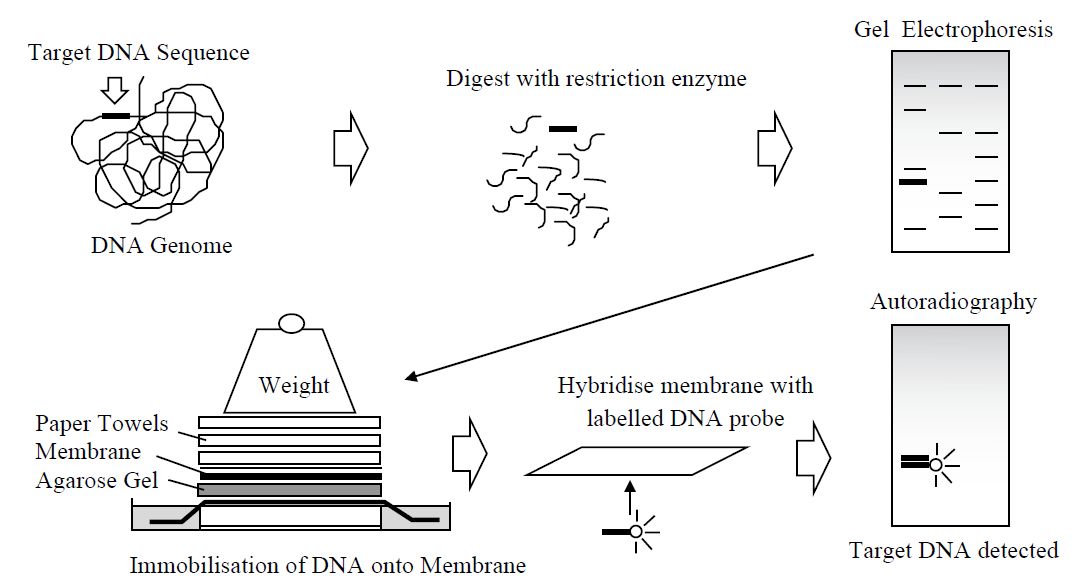
DNA Blotting
 المؤلف:
John M Walker and Ralph Rapley
المؤلف:
John M Walker and Ralph Rapley
 المصدر:
Molecular Biology and Biotechnology 5th Edition
المصدر:
Molecular Biology and Biotechnology 5th Edition
 الجزء والصفحة:
الجزء والصفحة:
 7-11-2020
7-11-2020
 1934
1934
DNA Blotting
Electrophoresis of DNA restriction fragments allows separation based on size to be carried out; however, it provides no indication as to the presence of a specific, desired fragment among the complex sample (Figure 1). This can be achieved by transferring the DNA from the intact gel on to a piece of nitrocellulose or nylon membrane placed in contact with it. This provides a more permanent record of the sample since DNA begins to diffuse out of a gel that is left for a few hours. First the gel is soaked in alkali to render the DNA single stranded. It is then transferred to the membrane so that the DNA becomes bound to the it in exactly the same pattern as that originally on the gel. This transfer, named a Southern blot after its inventor Ed Southern, can be performed electrophoretically or by drawing large volumes of buffer through both gel and membrane, thus transferring DNA from one to the other by
 Figure 1. The steps involved in the production of a Southern blot and the subsequent
Figure 1. The steps involved in the production of a Southern blot and the subsequent
detection of a specific DNA sequence following hybridisation with a complementary labelled gene probe.
capillary action. The point of this operation is that the membrane can now be treated with a labelled DNA molecule, for example a gene probe. This single-stranded DNA probe will hybridise under the right conditions to complementary fragments immobilised on the membrane.
The conditions of hybridisation, including the temperature and salt concentration, are critical for this process to take place effectively. This is usually referred to as the stringency of the hybridisation and it is particular for each individual gene probe and for each sample of DNA. A series of washing steps with buffer are then carried out to remove any unbound probe and the membrane is developed, after which the precise location of the probe and its target may be visualised. It is also possible to analyse DNA from different species or organisms by blotting the DNA and then using a gene probe representing a protein or enzyme from one of the organisms. In this way, it is possible to search for related genes in different species. This technique is generally termed Zoo blotting.
 الاكثر قراءة في مواضيع عامة في الاحياء الجزيئي
الاكثر قراءة في مواضيع عامة في الاحياء الجزيئي
 اخر الاخبار
اخر الاخبار
اخبار العتبة العباسية المقدسة


